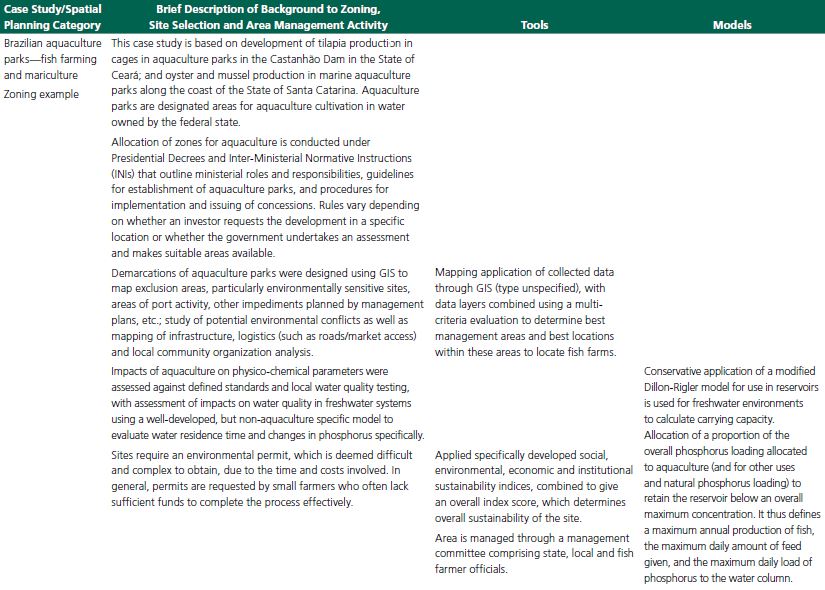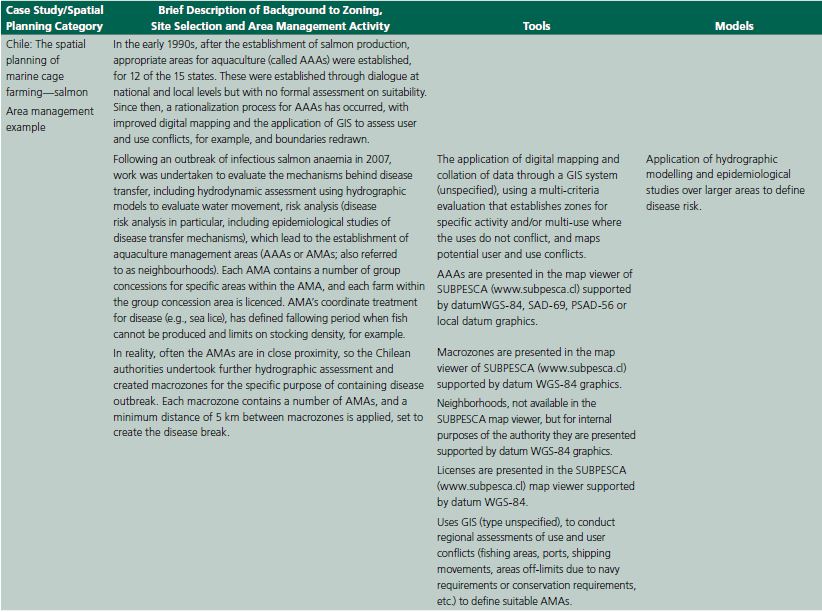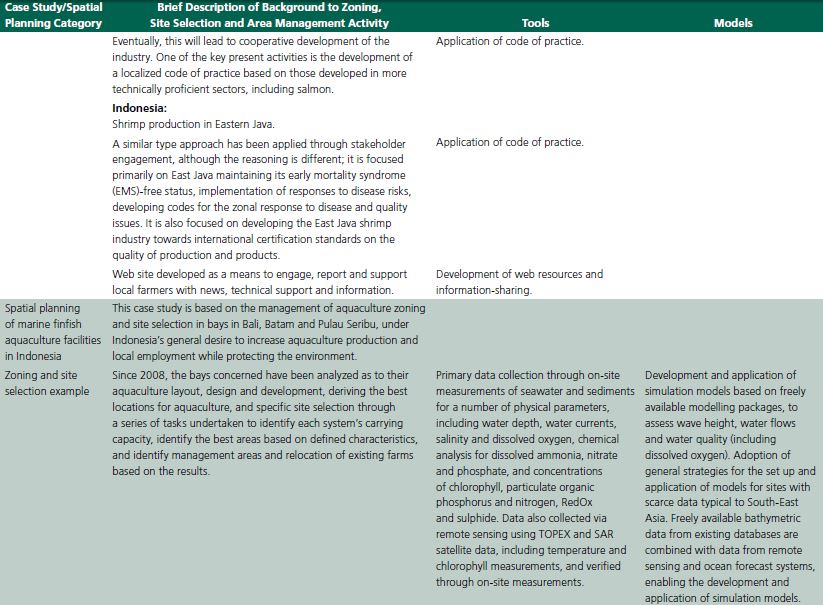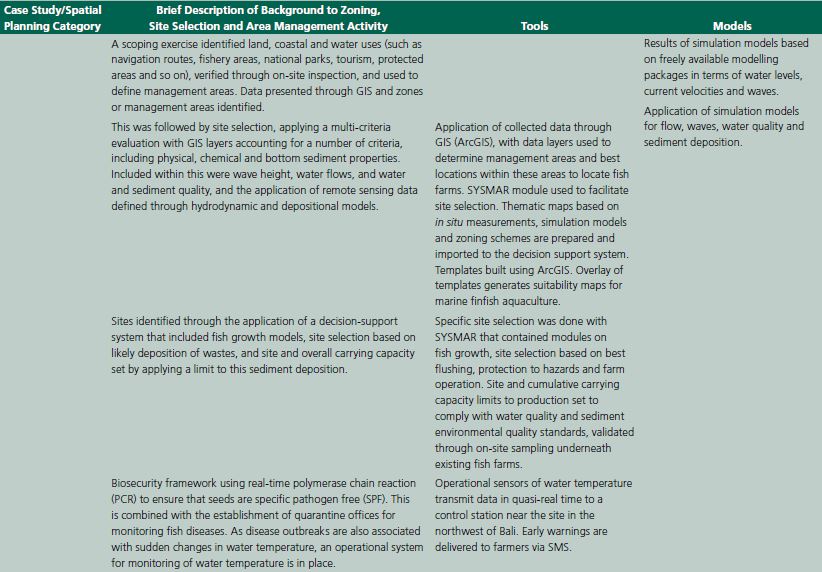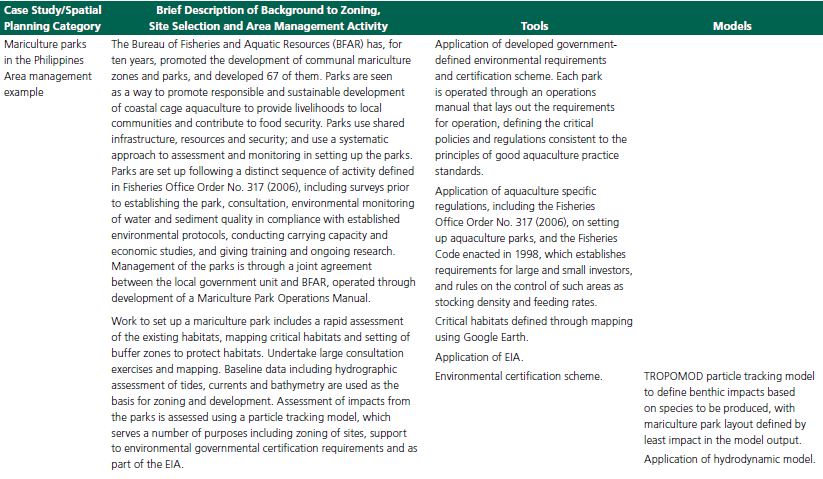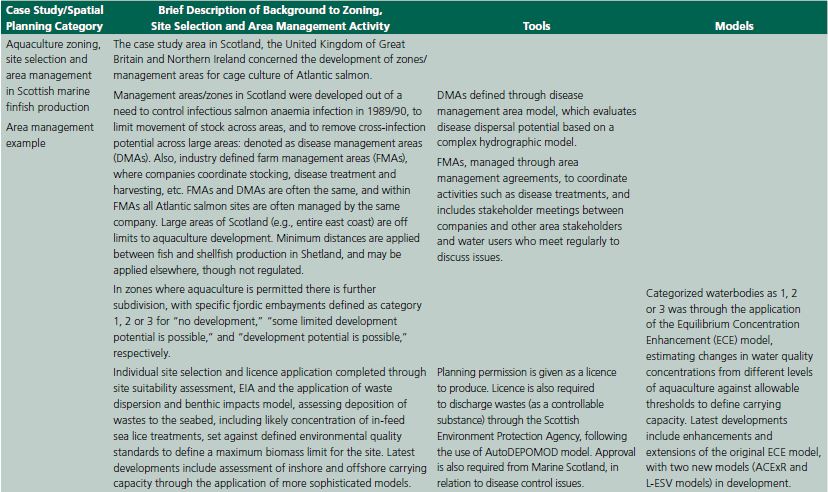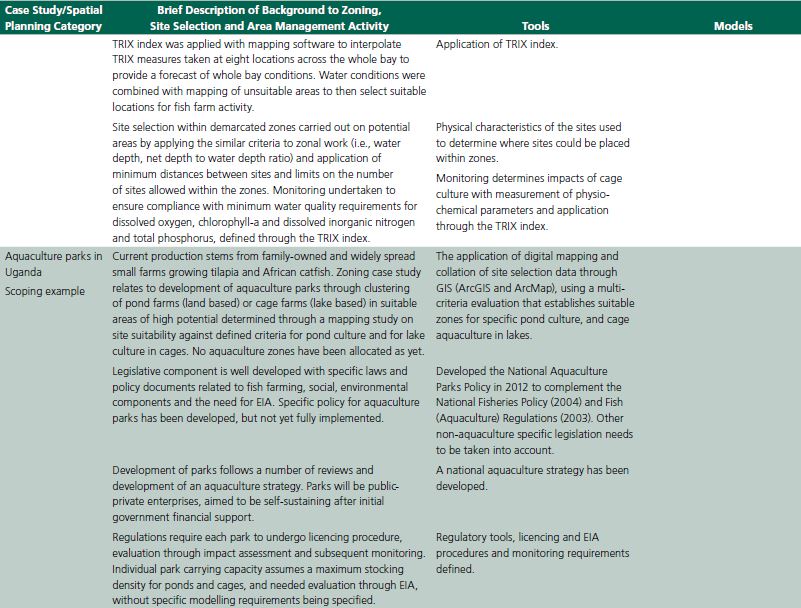Part 1. Case Study Summaries
Spatial planning following the ecosystem approach for aquaculture is in the early stages of development internationally and reflects the need for this guidance document. Annex 5 of this document includes ten case studies, presented by the authors at the workshop in Izmir, Turkey, in 2015. These case studies provide an invaluable insight into the spatial planning development stage in each country, and include scoping, zoning, site selection and/or area management examples, focusing on the spatial planning processes and identifying the tools and models used as part of that development activity.
Table A4.1 summarizes the activity undertaken and the reasons behind the work undertaken, and identifies tools and models used in that development. The case studies summarized in Table A4.1 provide evidence that systematic assessment and activities that lead to a more coordinated spatially driven approach for aquaculture is gaining traction globally. Aquaculture expansion has often developed naturally, but in an uncoordinated way, such that environmental and other limitations have not been considered systematically to enable the appropriate allocation of zones for culture of fish and other species. Uncoordinated expansion is, by definition, unsustainable. Zoning, site selection and area management are not simply the “giving” of space for aquaculture. They require a systematic approach, including collection, analysis and mapping of data; and the use of models are increasingly being used to determine the best locations for aquaculture development that means aquaculture will be sustainable in the long term. Unrestricted aquaculture development has the potential to damage the environment, which is counter to the ecosystem approach.
The case study summaries describe the spatial planning activities undertaken in each country. Although the activities described are not necessarily examples of precise best practices, they do illustrate the application of systematic approaches to scoping, aquaculture zoning, site selection and/or area management, so that production can occur with the least impact on the environment while maintaining ecological and social carrying capacity. The processes implemented, however, offer a variety of means to achieve this.
TABLE A4.1. Summary of the tools and models used in ten case studies described in this document.
